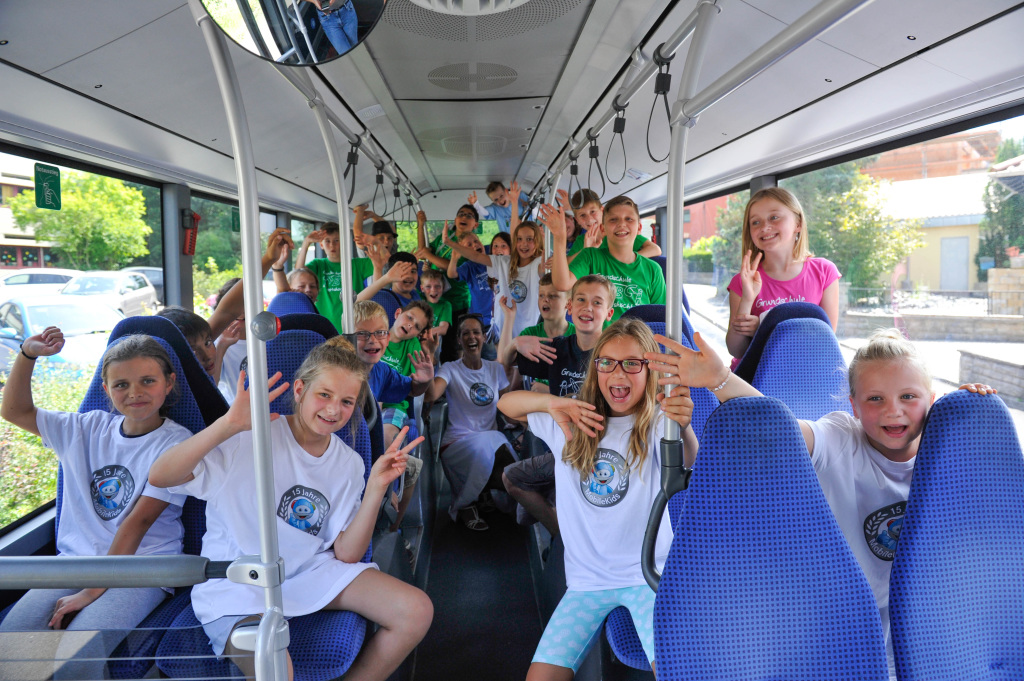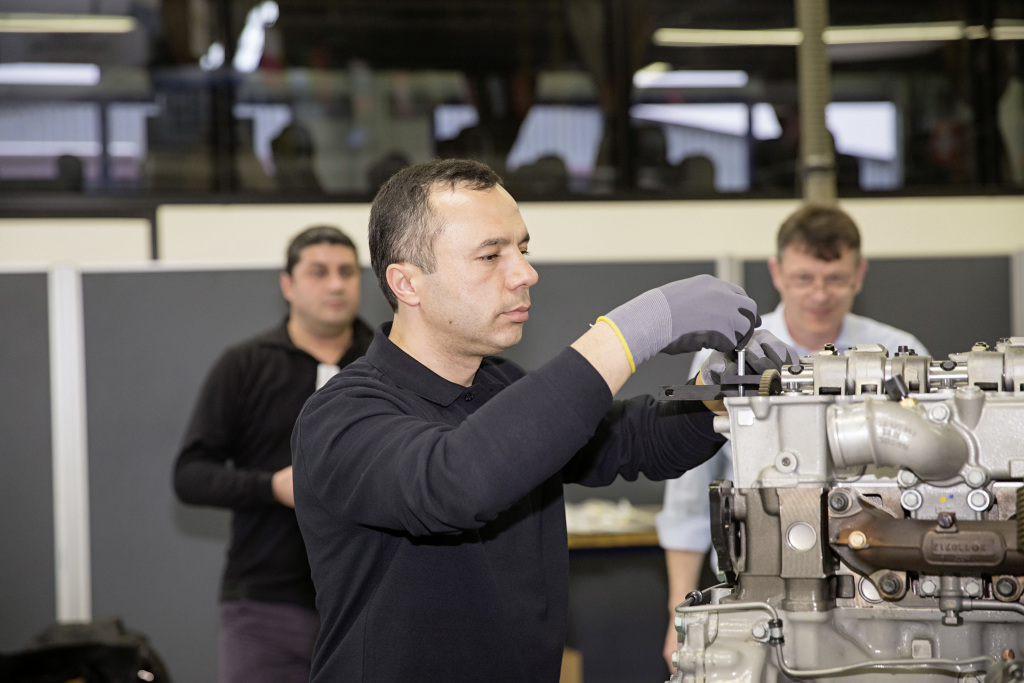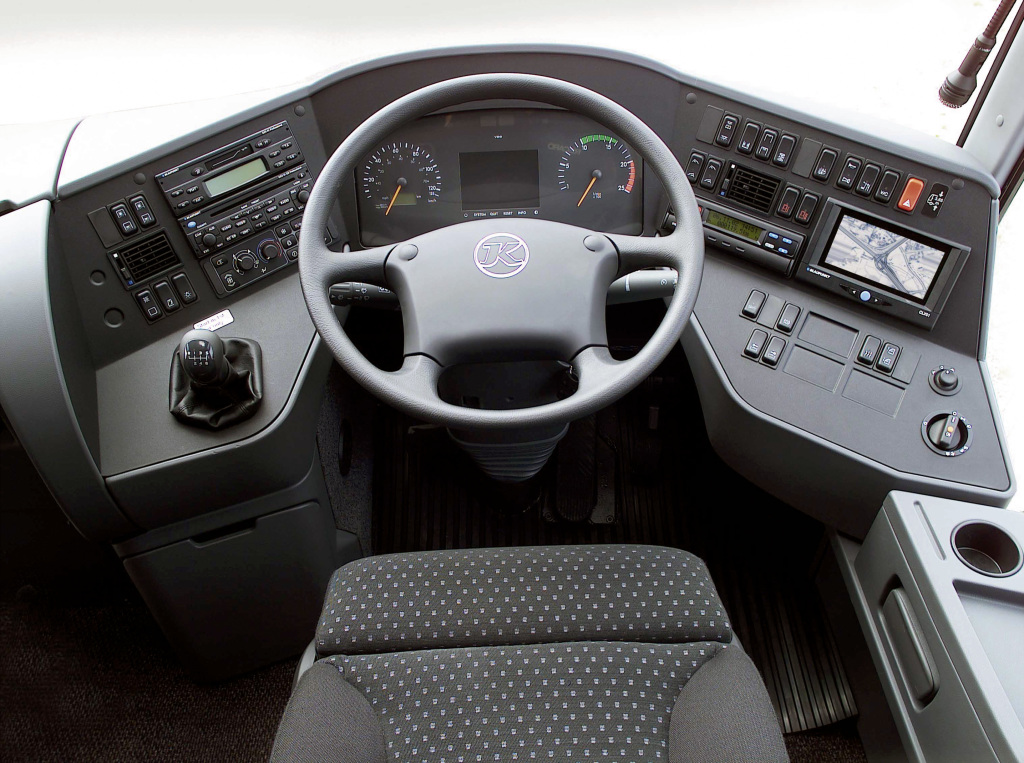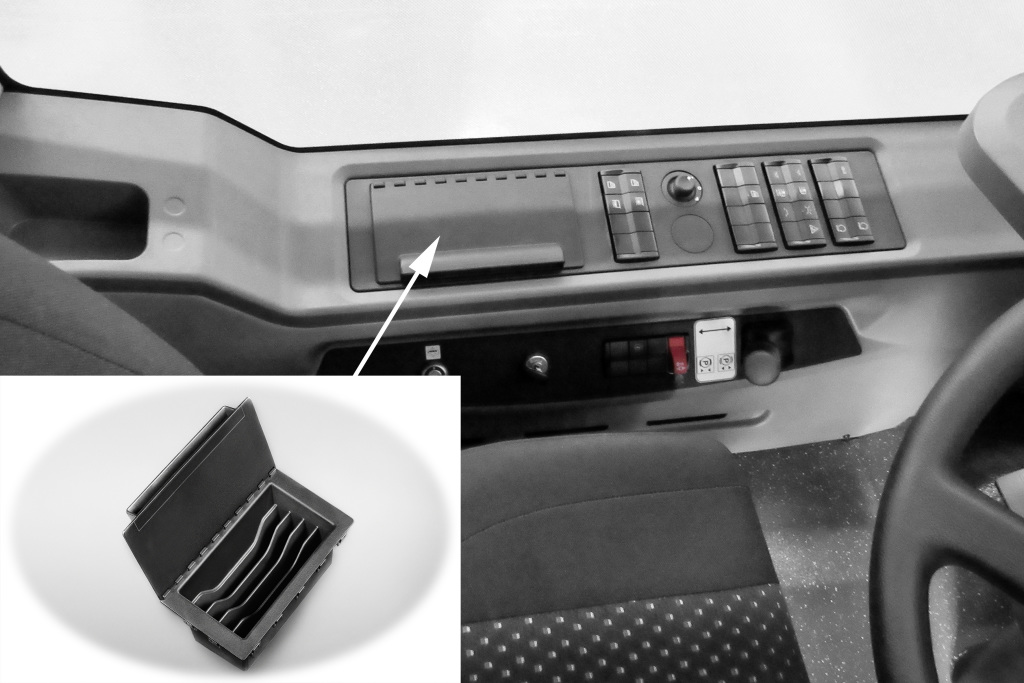"Thanks to polymers and 3D printing, tomorrow's vehicles will be ever more personalised"

Everyone has heard of Daimler. Is there anything more you can tell us ?
 We are one of the world's largest manufacturers of high-end passenger cars. We are also a manufacturer of commercial vehicles and have the world's largest presence in this division, and we are therefore among the leaders in this area. As for buses, we offer a complete range on all continents thanks to our different brands: Mercedes-Benz, Setra and BharatBenz. Like many manufacturers, we also deploy a comprehensive service offer. Our most important production sites are located in Germany, France, Spain, Turkey, Argentina, Brazil, Mexico and, more recently, India since 2015. In 2016, Daimler Buses made 66% of its sales in Europe and 13% in Latin America (excluding Mexico). While we mainly sell full buses in Europe, our business in Latin America, Mexico, Africa and Asia focuses on the production and sale of chassis. The growth of the market is encouraging, especially in Europe. In 2016, we sold 26,200 buses and chassis worldwide.
We are one of the world's largest manufacturers of high-end passenger cars. We are also a manufacturer of commercial vehicles and have the world's largest presence in this division, and we are therefore among the leaders in this area. As for buses, we offer a complete range on all continents thanks to our different brands: Mercedes-Benz, Setra and BharatBenz. Like many manufacturers, we also deploy a comprehensive service offer. Our most important production sites are located in Germany, France, Spain, Turkey, Argentina, Brazil, Mexico and, more recently, India since 2015. In 2016, Daimler Buses made 66% of its sales in Europe and 13% in Latin America (excluding Mexico). While we mainly sell full buses in Europe, our business in Latin America, Mexico, Africa and Asia focuses on the production and sale of chassis. The growth of the market is encouraging, especially in Europe. In 2016, we sold 26,200 buses and chassis worldwide.
You have recently started printing parts for mass-produced vehicles. How did this idea arise?
 Our vehicles are mass-produced, but some parts, depending on the options, have to be manufactured in relatively limited quantities. In such cases, where the number of units is very small, the advantage of components manufactured using 3D printers mainly relates to lower costs given that we no longer need to have expensive tools such as moulds. In 2016, we fitted our plant in Untertürkheim with 3D printers. We produce about 100,000 parts a year, many of them for special vehicles, so small series like our Unimog all-terrain truck. The 3D printing process will also enable us to install printers in Daimler Buses' production facilities all over the world. In addition, we can also respond flexibly to local demand from customers with specific and unique needs. This will increase the availability of parts while avoiding high transport costs due to deliveries over large distances.
Our vehicles are mass-produced, but some parts, depending on the options, have to be manufactured in relatively limited quantities. In such cases, where the number of units is very small, the advantage of components manufactured using 3D printers mainly relates to lower costs given that we no longer need to have expensive tools such as moulds. In 2016, we fitted our plant in Untertürkheim with 3D printers. We produce about 100,000 parts a year, many of them for special vehicles, so small series like our Unimog all-terrain truck. The 3D printing process will also enable us to install printers in Daimler Buses' production facilities all over the world. In addition, we can also respond flexibly to local demand from customers with specific and unique needs. This will increase the availability of parts while avoiding high transport costs due to deliveries over large distances.
We use this technology to produce around thirty different spare parts for buses and trucks. We can now take this one step further in the bus market, since we are now able to offer optional parts. This would have been impossible to achieve using the conventional injection technique due to the high cost. Our customers are very satisfied and we expect to see strong growth in demand. In addition, Mercedes-Benz automobiles has also started using the technique to the great joy of classic car enthusiasts. The process makes it possible to "re-manufacture" parts that have long been discontinued.

Finally, what type(s) of polymers do you use?
 Currently, essentially polyamide which is then sintered by laser. But we are very attentive to what is happening in the plastics industry and we are working together to produce polymers with improved mechanical properties and which are able to withstand high temperatures. We are very much looking forward to the time when they will have been developed.
Currently, essentially polyamide which is then sintered by laser. But we are very attentive to what is happening in the plastics industry and we are working together to produce polymers with improved mechanical properties and which are able to withstand high temperatures. We are very much looking forward to the time when they will have been developed.
Is this process profitable for a company such as Daimler?
 Yes, it is, but not in all cases. 3D printing is particularly profitable for small-scale production. If a mould exists, injection remains the more financially interesting proposition in almost all cases. 3D printing technology is still very slow, so it raises problems in terms of productivity. Depending on its complexity, a part can take anywhere from a few hours to be produced, and a machine can only make one part at a time. Finally, the powdered raw material is more expensive than polymer granules. However, these printers provide us with new opportunities that would have been impossible to develop using more traditional means of production without making significant investments. This is the case for the parts used to customise the vehicles that we sell.
Yes, it is, but not in all cases. 3D printing is particularly profitable for small-scale production. If a mould exists, injection remains the more financially interesting proposition in almost all cases. 3D printing technology is still very slow, so it raises problems in terms of productivity. Depending on its complexity, a part can take anywhere from a few hours to be produced, and a machine can only make one part at a time. Finally, the powdered raw material is more expensive than polymer granules. However, these printers provide us with new opportunities that would have been impossible to develop using more traditional means of production without making significant investments. This is the case for the parts used to customise the vehicles that we sell.
In this regard, which parts can be customised?
Buses contain many compartments designed to hold the driver's personal belongings. They are usually located on the dashboard or on the left side of the vehicle. We now offer the option to customise those compartments. For example, our customers can choose a model designed to hold banknotes, which are sometimes indispensable for passing tolls in certain countries. This is an optional feature, so we are aware that only a few of our customers will opt for this specific storage compartment. This is why we have opted to use 3D printing, because it would have been impossible to offer this storage compartment at a reasonable price, particularly given that it is not manufactured from a single block, due to the small number of units to be produced. Additive manufacturing has proven to be cost-effective and has enabled us to expand our catalogue with more options.

This is a real added value for our customers. Another advantage is that this type of part can be manufactured very quickly, so they have already been installed before the bus is delivered.
Do you think you can go even further?
 Yes. For the time being, these are the only options that appear in our catalogue, but we hope to be able to meet our customers' specific demands in the very near future. Almost anything is possible with 3D printers. This technology is evolving very quickly and we also believe that we will be able to manufacture components that require greater mechanical resistance like that required by supports of all kinds. In the same vein, we would like to be able to design components for transporting fluids that are generally very hot in an engine. For now, this is only speculation but we firmly believe in this technology that is developing every day.
Yes. For the time being, these are the only options that appear in our catalogue, but we hope to be able to meet our customers' specific demands in the very near future. Almost anything is possible with 3D printers. This technology is evolving very quickly and we also believe that we will be able to manufacture components that require greater mechanical resistance like that required by supports of all kinds. In the same vein, we would like to be able to design components for transporting fluids that are generally very hot in an engine. For now, this is only speculation but we firmly believe in this technology that is developing every day.





